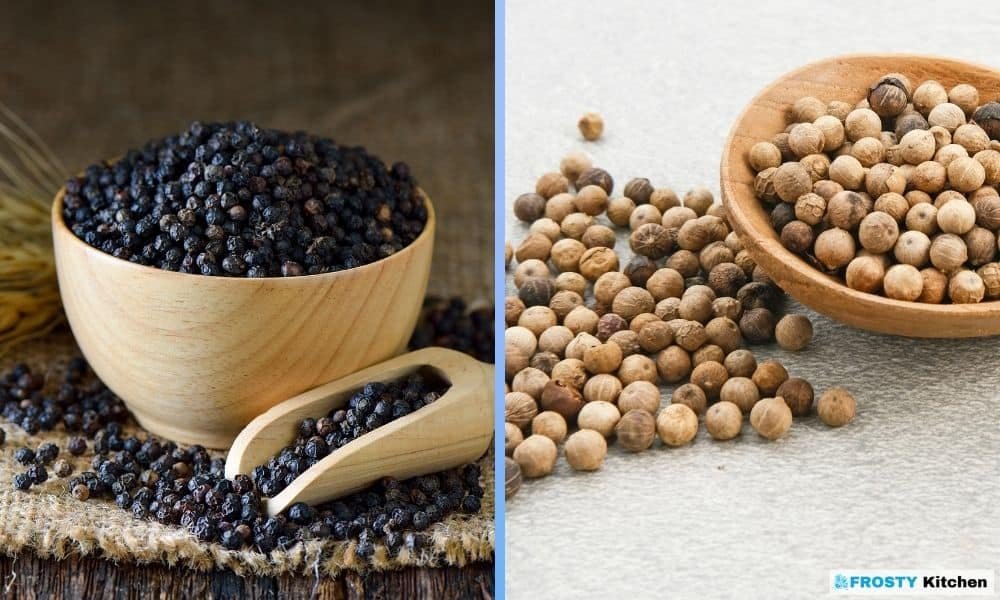Pepper seeds, known for their fiery zest, are a beloved choice among gardeners and culinary enthusiasts alike. Their ability to infuse a spicy kick into dishes makes them indispensable in kitchens around the globe. This guide aims to shepherd you through the nuances of storing pepper seeds, ensuring their vigor for both planting and culinary endeavors.
What is Pepper Seeds?
Pepper seeds are the tiny kernels harvested from the fruits of plants within the Capsicum genus. Known for their spicy nature, these seeds are the essence of heat in many cuisines. They are available in various heat levels, identified by the Scoville scale, and colors, making them a versatile ingredient in an array of culinary creations.
Origin and History
Originating from Central and South America, pepper seeds have journeyed across continents over centuries. Their spicy allure quickly gained favor in many culinary cultures, becoming a staple in numerous traditional dishes.
Nutritional Value
Pepper seeds, although tiny, are packed with a potent punch of nutritional benefits:
- Metabolic Booster: The capsaicin in pepper seeds is known to boost metabolism.
- Rich in Antioxidants: These seeds are a good source of antioxidants that combat oxidative stress.
- Vitamin C Source: They are a decent source of Vitamin C, which is crucial for immune health.

Importance of Proper Storage for Pepper Seeds
The vitality of pepper seeds, whether for germination or culinary use, heavily relies on proper storage. Ensuring the seeds are stored correctly can significantly prolong their usability and potency.
General Lifespan and Preservation
When stored appropriately, pepper seeds can retain their germination viability for up to 2-3 years, while their spicy essence can linger even longer.
Factors Affecting the Lifespan of Pepper Seeds
Temperature
A cool, stable temperature is crucial for preserving the vitality of pepper seeds. High temperatures can accelerate the degradation of the seeds, affecting their germination rate and flavor potency.
Exposure to Light
Light exposure can degrade the quality of pepper seeds over time. Storing them in a dark place or in opaque containers can significantly help in preserving their quality.
Moisture Content
Moisture is a formidable foe of pepper seeds. It’s imperative to ensure a dry storage environment to prevent mold growth and spoilage, which would render the seeds unusable.
Packaging
Proper packaging is essential to shield pepper seeds from adverse environmental conditions. Airtight packaging or vacuum-sealed containers can significantly prolong the viability and flavor potency of pepper seeds.
Air Quality
The quality of air, particularly its moisture and oxygen content, can affect the rate at which pepper seeds degrade. Ensuring airtight storage will help in maintaining the seeds’ quality.
Signs of Spoiled Pepper Seeds
Appearance
Visible signs of mold, discoloration, or any form of damage are clear indicators that the seeds may no longer be viable or have lost their flavor potency.
Odor
A musty or off-putting odor can indicate mold growth or spoilage, signifying that the seeds may not be viable for planting or culinary use.
Preparation for Storage
Ensuring that the pepper seeds are clean, dry, and free from any debris or contaminants before storage is crucial for preserving their viability and flavor potency.
Picking the Right Packaging/Container
Selecting the appropriate packaging or containers is crucial for preserving the quality and viability of pepper seeds. Containers that are airtight and opaque are often the best choices.
Recommended Types of Containers for Storage
Various container options are suitable for storing pepper seeds. Glass jars with airtight lids, vacuum-sealed bags, or BPA-free plastic containers are excellent choices. These containers shield the seeds from environmental adversities like air, moisture, and light, thus preserving their quality and extending their lifespan.
Step-by-Step Guide to Storing Pepper Seeds
Proper storage of pepper seeds is a straightforward yet crucial process to retain their viability for germination and maintain their spicy essence for culinary use.
Method 1: Dry Storage
- Step 1: Ensure the pepper seeds are clean and completely dry to prevent mold growth.
- Step 2: Transfer the seeds into an airtight container to protect them from moisture and air.
- Step 3: Store the container in a cool, dark, and dry place away from direct sunlight and heat sources.
Method 2: Refrigerator Storage
- Step 1: Ensure the pepper seeds are clean and completely dry to prevent any moisture-related spoilage.
- Step 2: Transfer the seeds into an airtight, dark-colored, or opaque container to shield them from light and moisture.
- Step 3: Place the container in the refrigerator, ensuring it’s away from any strong-smelling foods to maintain the seeds’ flavor integrity.
Frequently Asked Questions
Q1: Can pepper seeds lose their spiciness over time?
Yes, over time, and especially if not stored properly, pepper seeds can lose their spiciness. Proper storage in a cool, dark, and dry environment can significantly prolong their spicy essence.
Q2: How can I extend the shelf life of pepper seeds?
Storing pepper seeds in a cool, dark place, and in an airtight container can significantly extend their shelf life and preserve their spiciness. Ensuring the seeds are clean and completely dry before storage also plays a vital role in extending their shelf life.
Q3: When is the best time to plant pepper seeds?
The best time to plant pepper seeds is 8-10 weeks before the last expected frost date in your area. This timing gives the seeds ample time to germinate and the seedlings to grow strong before transplanting outdoors.

